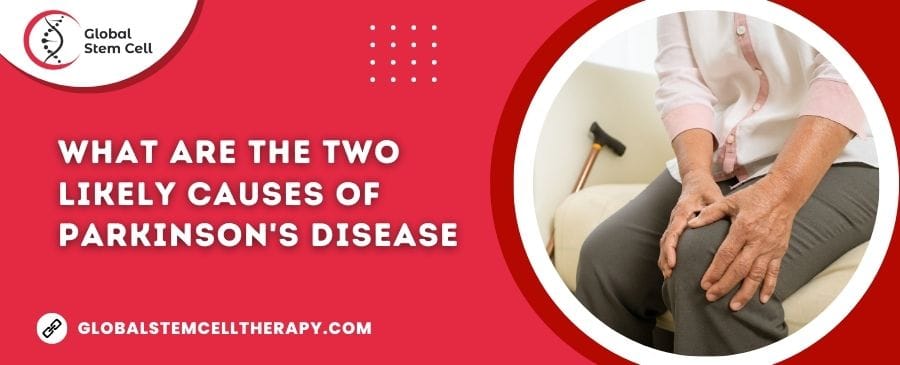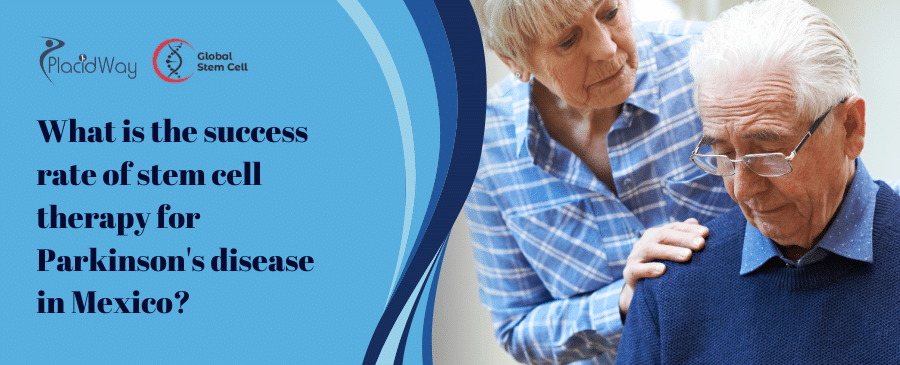
Understanding the Two Likely Causes of Parkinson’s Disease
Table of Content
In the evolving landscape of neurodegenerative diseases, Parkinson’s disease holds a distinct place due to its unique symptoms and elusive causes. Despite extensive research, the precise origins of this disease remain somewhat mysterious, with clues pointing toward a combination of genetic and environmental factors.
This intriguing duality paints a complex picture of the disease, hinting at a multifaceted interplay between our genes, our environment, and the ways they interact. In the following discourse, we will delve into these two likely causes, unpacking their influence and implications in the onset and progression of Parkinson’s disease.
By shedding light on these factors, Such as Two Likely Causes of Parkinson’s Disease we hope to create a persuasive narrative, underscoring the significance of comprehensive research in the journey towards understanding and combating Parkinson’s disease.
What is Parkinson’s Disease
Parkinson’s disease is a progressive nervous system disorder that affects movement. It develops gradually, sometimes starting with a barely noticeable tremor in just one hand. While a tremor may be the most well-known sign of Parkinson’s disease, the disorder also commonly causes stiffness or slowing of movement.
The disease is caused by the degeneration of nerve cells in a part of the brain called the substantia nigra, which produces dopamine, a chemical messenger responsible for transmitting signals within the brain that allow for coordination of movement. With the death of these dopamine-producing cells, the brain becomes deprived of dopamine, leading to impaired movement and other symptoms of Parkinson’s disease.
Symptoms of Parkinson’s disease may include:
- Tremors, mainly at rest and described as pill rolling tremor in hands.
- Stiff muscles (rigidity) and aching muscles.
- Limited movement, especially sudden movements, which are known as bradykinesia.
- Weak balance or coordination.
As the disease progresses over time, individuals may have difficulty walking, talking, or completing other simple tasks. They may also experience non-motor symptoms, including sleep problems, depression, cognitive changes, and other health issues.
As of now, there is no cure for Parkinson’s disease, but medications, surgical treatment, and multidisciplinary management can provide relief from the symptoms. The exact cause of Parkinson’s disease is unknown, but several factors appear to play a role, including genetics and environmental triggers.
Understanding Parkinson’s Disease
Parkinson’s disease, a progressive neurodegenerative disorder, is characterized by its profound impact on movement control. It is marked by symptoms such as tremors, stiffness, balance issues, and slowed movements, which progressively worsen over time. This condition stems from the gradual loss of dopamine-producing cells in a specific region of the brain known as the substantia nigra.
The decrease in dopamine—a neurotransmitter essential for smooth, coordinated muscle movements—leads to the onset of Parkinson’s disease. However, the question that baffles scientists and researchers is: what triggers this loss of dopamine-producing cells? Extensive research in this domain suggests two primary culprits—genetic and environmental factors. As we delve deeper into the nature of Parkinson’s disease, we shall explore the roles these factors play in influencing the risk, onset, and progression of this complex condition.
Two Likely Causes of Parkinson’s Disease
Parkinson’s disease, a complex neurodegenerative disorder, has intrigued scientists and researchers for decades as they strive to uncover its elusive causes. Through extensive investigation, two likely contributors have emerged: genetic factors and environmental influences.
Cause #1: Genetic Factors
The intricate blueprint of our bodies is encoded within our genes. However, sometimes, there can be errors or mutations within this genetic code, which can lead to various health conditions, including Parkinson’s disease. Although the majority of Parkinson’s cases appear to be sporadic, a significant subset has been linked to certain genetic mutations.
Genes such as SNCA, LRRK2, and GBA, among others, have been associated with Parkinson’s disease. Mutations in these genes can result in abnormal proteins or disrupt the way cells process waste products. This can lead to increased stress within the cell and eventually the death of dopamine-producing neurons, triggering the symptoms of Parkinson’s disease.
But here’s the intriguing part: not everyone carrying these mutations develops Parkinson’s. This observation has led scientists to believe that while genetic predisposition is a crucial factor, it is not the sole determinant. The presence of genetic mutations might increase the risk, but the actual development of the disease could be influenced by other factors, such as environmental triggers. This thought introduces us to our second likely cause: environmental factors.
Cause #2: Environmental Factors
Environmental factors represent the second half of the equation in understanding the likely causes of Parkinson’s disease. Our surroundings and lifestyle choices can significantly influence the risk of developing this condition, even in the presence of genetic predispositions.
A range of environmental factors, including exposure to specific toxins and chemicals, have been linked to an increased risk of Parkinson’s disease. Notably, extensive research has shown a correlation between exposure to pesticides and the incidence of Parkinson’s, indicating a potential risk associated with certain occupations, such as farming.
Furthermore, lifestyle choices also seem to play a part. Interestingly, smoking and caffeine consumption appear to have a protective effect against Parkinson’s, reducing the risk of developing the condition. The exact mechanisms behind this protective effect remain unclear and are a subject of ongoing research.
However, it’s important to note that these environmental factors do not act in isolation. They interact with an individual’s genetic makeup, influencing disease risk and progression. This interplay between genes and the environment takes us to the heart of understanding the causes of Parkinson’s disease.
The Interplay between Genetics and Environment
The interaction between genetics and environmental factors forms the cornerstone of our understanding of Parkinson’s disease. It’s not a simple case of one or the other but rather a complex dialogue between the two that influences an individual’s risk of developing this condition. This concept, known as gene-environment interaction, is a key area of focus in Parkinson’s disease research.
An individual may carry genetic mutations associated with Parkinson’s, but without specific environmental triggers, the disease may not manifest. Conversely, exposure to certain environmental factors can increase the risk of Parkinson’s in genetically susceptible individuals. This complex interplay adds another layer of intricacy to the already multifaceted nature of Parkinson’s disease.
Understanding these interactions is an enormous challenge, given the vast number of potential genetic and environmental combinations. However, it is essential as it could explain why some people develop the disease while others with similar genetic profiles or environmental exposures do not. This understanding also holds the key to developing personalized prevention and treatment strategies for Parkinson’s disease.
The Importance of Research in Unraveling the Causes
Delving into the causes of Parkinson’s disease is akin to assembling a vast, intricate puzzle. Each piece represents a fragment of knowledge, a genetic clue, an environmental factor, or an insight into their complex interaction. The task is monumental, but each piece we fit together brings us a step closer to understanding the complete picture.
The study of genetic and environmental factors and their interplay in Parkinson’s disease is not merely an academic endeavor. It holds significant real-world implications. By unraveling these causes, we pave the way for developing effective treatments and, potentially, a cure. These research findings may also offer insights into prevention strategies, early detection, and personalized treatment plans, profoundly impacting the lives of those at risk or already living with Parkinson’s disease.
Moreover, the knowledge gained from studying Parkinson’s disease extends beyond this specific condition. It contributes to a broader understanding of neurodegenerative disorders and provides invaluable insights into the functioning of the human brain. Therefore, advocating for and supporting Parkinson’s research is of paramount importance.
Our pursuit of knowledge is ceaseless, and with each new discovery, we inch closer to our ultimate goal—a world free from the grip of Parkinson’s disease.
Final Advise
In the pursuit to fully understand Parkinson’s disease, the journey is as critical as the destination. While we have made significant strides in uncovering the genetic and environmental factors that contribute to its onset, the interplay between these elements continues to present a complex, intriguing mystery. It is this complex interplay that underscores the importance of comprehensive, multi-faceted research.
The quest to fully comprehend Parkinson’s disease remains a challenging endeavor, but the potential rewards are invaluable. Continued support for research will not only propel us towards better treatments and possibly a cure for this disease, but also enrich our broader understanding of neurodegenerative conditions and brain function.
Our collective effort to shed light on the causes of Parkinson’s disease will undeniably contribute to a brighter, healthier future for those affected by this condition. It is with this hope that we must continue to explore, study, and advocate, breaking new ground in our understanding and ultimately changing the trajectory of Parkinson’s disease.






